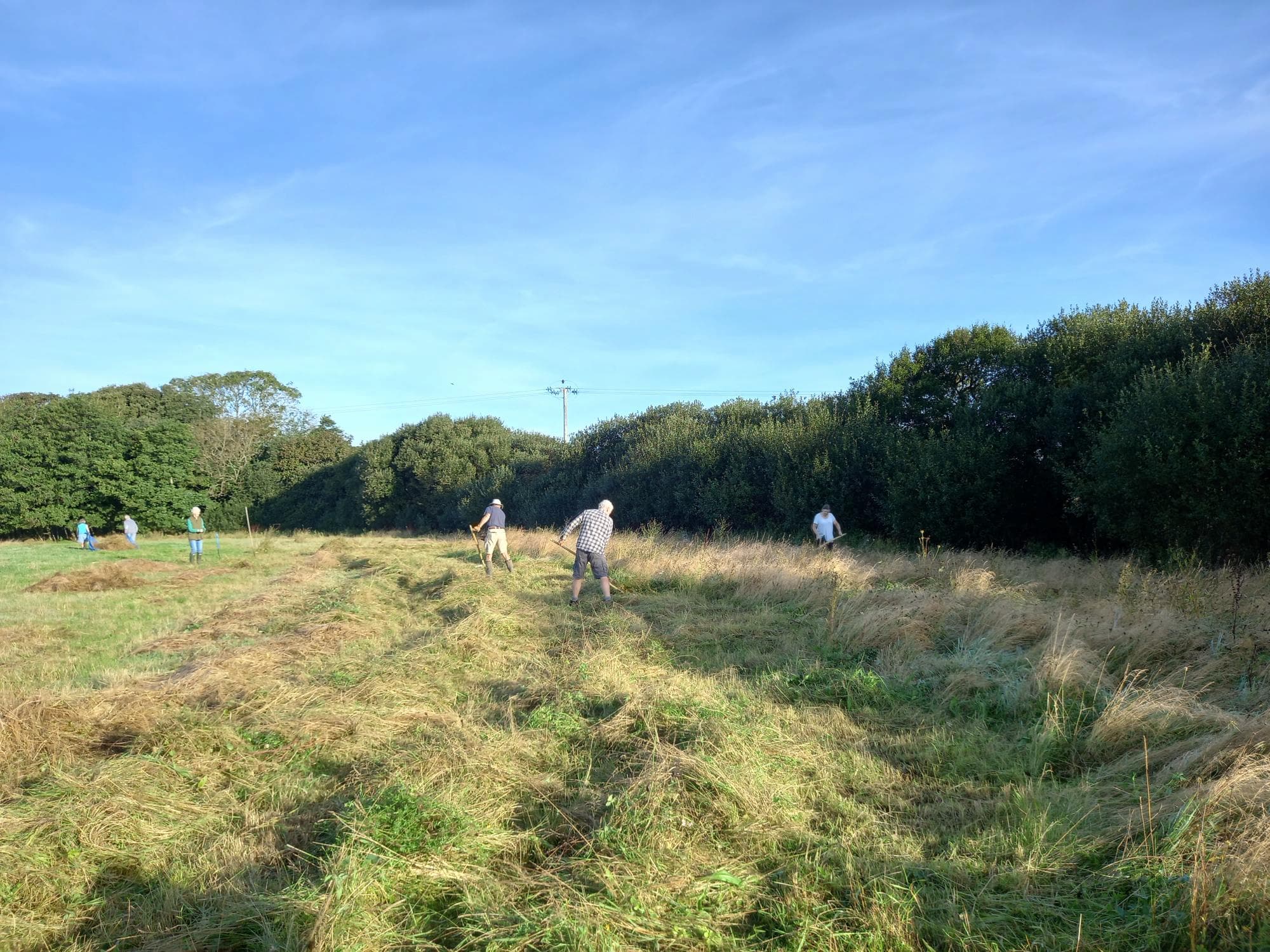
Mike's Meadow
REACT is delighted to be involved with the management of Mike’s Meadow near Veryan. Owned by Cornwall Council this half-hectare of land adjacent to woodland and farmland is currently managed under licence by the National Trust working with REACT volunteers. REACT is negotiating with Cornwall Council to take on a lease to manage the meadow for the longer term. Volunteer help is needed so please do get in touch if you are interested.
Early Days
A few years ago our friends at Wild Roseland were looking to develop a network of wildflower rich sites through a combination of habitat creation and modification by planting, seeding and suitable management. As well as providing a diverse range of wildflower species it was hoped that this would provide important sources of nectar and pollen for our native pollinators.
One potential site at Veryan was then farmed by tenant farmer Mike Harrison who was keen to support Wild Roseland’s objectives. In early 2019 Mike prepared the site by ploughing, bringing the less fertile soil to the surface, followed by harrowing. Raking by volunteers provided a good seedbed to receive the seed mixes which were broadcast by hand. A mix of annual arable weed seeds was sown along with perennial herbs and grasses in the first area. The annuals provided an immediate splash of colour in 2019 with the perennials starting to take over in summer 2020.
In 2021 a group of volunteers went on a scything course. Armed with their Austrian scythes and newly acquired skills, they set about cutting the meadow each summer, allowing seed to drop before working with other volunteers to remove the cuttings. In addition, yellow rattle plant plugs were established and locally acquired rattle seed was sown into bare patches. Yellow rattle, a semi parasitic plant associated with grasses, is a useful tool in establishing a wildflower patch, reducing the vigour of the grass and allowing other herbaceous species to establish.
What’s the issue?
Moths, butterflies, bees and many species of flies and beetles are important pollinators. In the UK there are over 1500 insect pollinator species responsible between them for pollinating important agricultural crops and most of our native flowering plants. These insects also provide vital food for many of our reptiles, birds and mammals.
Unfortunately, populations of many insect species including these vital and often colourful pollinators are in steep decline. Reasons include the loss of semi-natural wildflower rich habitats, the intensification of farming and the increased use of pesticides. The statistics are startling: for example, 97% of flower rich meadows in the UK are thought to have been lost since the 1930s and the majority of the 2800 species of moths in the UK have declined in the past 40 years. Cornwall has not been immune to this decline with the extinction of 28% of bumblebee species historically present here.
What has happened?
The initial mixture sown included a cornflower mix with colourful annuals like poppy, corncockle and corn marigold in one third of the area. A second section was sown with perennials particularly good for attracting butterflies and bees including 24 species of UK native species most of which are listed by the RHS as perfect for pollinators, along with six species of grass. The third section of the meadow has only been included in the site since the beginning of 2025 and is currently dominated by agricultural grasses.
In the first year after sowing there was a riot of colour in the cornfield annual dominated area, but as the grass sward developed these annual species became less obvious and so the soil will need to be disturbed again to encourage the germination of dormant seed. The other area has looked different each year with initial dominance by ox-eye daisy and more recently by knapweeds with other species gradually becoming established.
Mike Harrison
Mike died in 2021, and this meadow is part of his legacy. He was wonderful man, compassionate, warm, knowledgeable and very much in tune with nature. In 2019 Mike offered some of his land so that the project could proceed and deep ploughed the site to get us started. He always welcomed volunteers, to rake, sow and develop the area and was often on hand to cheerfully help and advise. Nothing was too much trouble for him. He offered more of his land as time progressed and as a result the area has been transformed into a paradise for the world of nature and a visual spectacle for passers-by. This wonderful meadow, home for bees, butterflies and other wildlife will now be known as Mike’s Meadow.
Getting involved...
Help is often needed to manage the meadow and other changes which will be developed in line with the management plan over the next few years. There will also be an opportunity for you to learn to scythe. Use the contact form and look out on this website for details of upcoming work parties and (hopefully) an open day in Spring 2026.

- September 18, 2025





